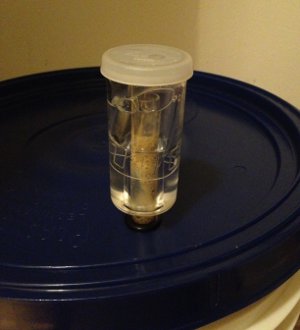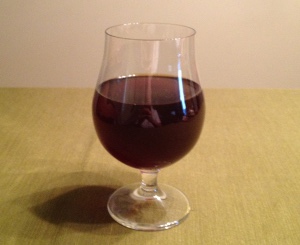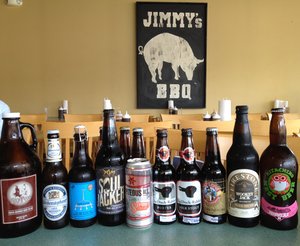So I’ve been slacking on my brewing hobby of late, though not without good reason. I spent most of December revamping my kitchen from the ground up, so there was much time when I simply wasn’t capable of brewing anything (not to mention the sanitary conditions, which were obviously poor whilst work was proceeding). After putting some finishing touches on the kitchen in January, I’m finally ready to resume brewing. One of the nice things about my new kitchen is that I upgraded my stovetop, which now comes complete with a “PowerBoil” element that, you guessed it, boils water faster than my old stovetop (I’m forced to use electric, which is less than ideal for brewing purposes). And boy did that come in handy. I estimate that this shaved a solid 30-60 minutes off the brewing process, which came in at around 2.5-3 hours, including post-brew cleaning.
This batch is being brewed for a specific reason, the titular “Fat Weekend”, a gathering of portly friends from all over the northeast (and some points west) which will be sometime in mid-march. Last year, I brought a variety of homebrews and was shocked to see that the Simcoe IPAs were the first beers to go (and got the best complements), so I’m making this specifically for that weekend. Let’s hope it turns out well.
In terms of recipe, this is a variation on my Simcoe Single Hop IPA from last year (interestingly enough, brewed exactly one year ago to the day). For the most part, the malt bill is identical. A slight increase in Crystal 20, simply because my homebrew shop was only selling in half-pound increments, and I’m using pilsen for the entire base malt (which, again, is just based on what was available). The big change, though, is in hops. Instead of using just Simcoe, I’m adding in the trendy hotness of Citra and Falconer’s Flight (both used in equal proportions for flavor and aroma additions). Simcoe will remain on bittering duty, as well as contributing the dry hop addition. Otherwise, we’ve got an identical recipe.
Beer #10: Fat Weekend IPA
Half-Batch (2.5 gallons)
February 4, 2013
.5 lb. Crystal 20 (specialty grain)
.5 lb. CaraPils (specialty grain)
.5 lb. Vienna Malt (specialty grain)
3.3 lb. Briess Pilsen Light LME
1 lb. Briess Pilsen DME
0.5 lb. Turbinado Sugar
1 oz. Simcoe (bittering @13.2 AA)
0.5 oz. Citra (flavor)
0.5 oz. Falconer’s Flight (flavor)
0.5 oz. Citra (aroma)
0.5 oz. Falconer’s Flight (aroma)
1 oz. Simcoe (dry hop)
1 tsp. Irish Moss
Wyeast 1056 – American Ale Yeast
Overall, pretty straightforward stuff here. The only major change is the hops. Citra seems very much in the vein of Simcoe, but it’s got a more fruity and less piney, woodsy feel to it. I also usually get a more herbal fruit out of it… nothing like a Euro-hop, but distinct from the grapefruit and pine character of Simcoe. Falconer’s Flight is actually a proprietary blend of numerous hops, including Amarillo, Citra, Simcoe, Sorachi Ace, and other Northwestern US hops, apparently even experimental hops not yet available by themselves. The idea of this blend is to approximate the flavor of the trendy hops in a blend featuring those same hops, but also less trendy (and thus more readily available) hops. Tired Hands has made a few beers featuring Falconer’s Flight recently, and they’re exceptional, so I’m thinking they’ll be a good fit here. Really excited to see how this will turn out.
Brought 2 gallons of water up to steeping temperature 150° F – 160° F in record time (less than 10 minutes), steeped the specialty grains for around 25 minutes or so, drained, sparged with another half gallon of water, added the malt extracts, put the lid on to bring to a boil. Again, this happened in record time, at which point I added 1 ounce of Simcoe and started the timer. Realize I forgot to add the Turbinado sugar, so do some quick calculations, add about half a pound in, throw the lid back on to get the boil going a little better. 45 minutes into the boil, add half an ounce each of Citra and Falconer’s Flight. I don’t have a scale or anything, so I’m doing this by sight, but it seems to be working out fine. Also throw in the irish moss at this time. Finally, with 5 minutes left to go, I add the aroma hops, which is again split between Citra and Falconer’s Flight.
Moved the pot to the ice bath to cool it off, brought it down to about 80° F, strained the wort (removing the hops) into the fermenter, and topped off with about a gallon of cold water, bringing the final temperature down below 70° (almost too low, actually, but still above 62°). This will produce slightly more than 2.5 gallons, but it’ll all work out for the best in the end.
Original Gravity: 1.070. A little higher than my last batch, but not by much (this makes sense, given the hot scotchie adventure I engaged in last time). I’m guessing this will still clock in around the 7% – 7.5% ABV range, perhaps on the higher end, which is fine by me.
Like I did last time, I’ll wait a week or so to let the primary fermentation stage end, then add the dry hops (1 ounce of Simcoe) for another week or so, at which point, I rack to the bottling bucket and bottle the suckers. I’m quite confident this batch will come out well.
After this one, I’m not sure what will be next. I’ve been toying with the idea of a hopped up imperial red ale, which could be a lot of fun (and would probably resemble the above recipe quite a bit, with some amber malt and maybe some other darker malts to balance things out). After that, I want to make a sessionable summer saison, similar to my last saison batch, if not quite as potent.
(Cross Posted on Kaedrin Weblog)
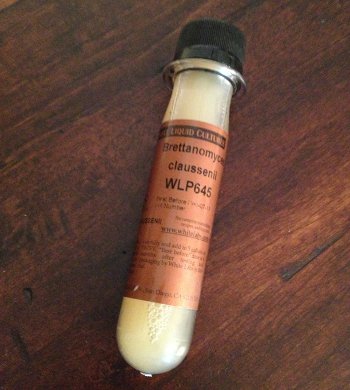
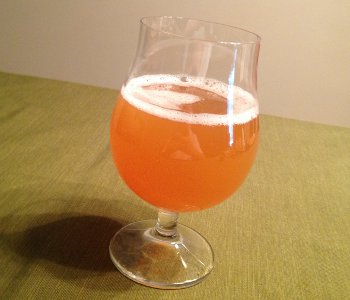

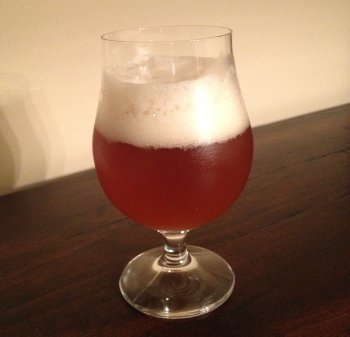
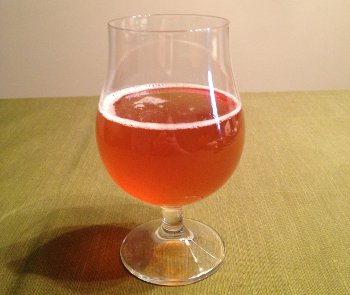
 On the first Friday of every month, there’s a beer blog roundup called
On the first Friday of every month, there’s a beer blog roundup called 